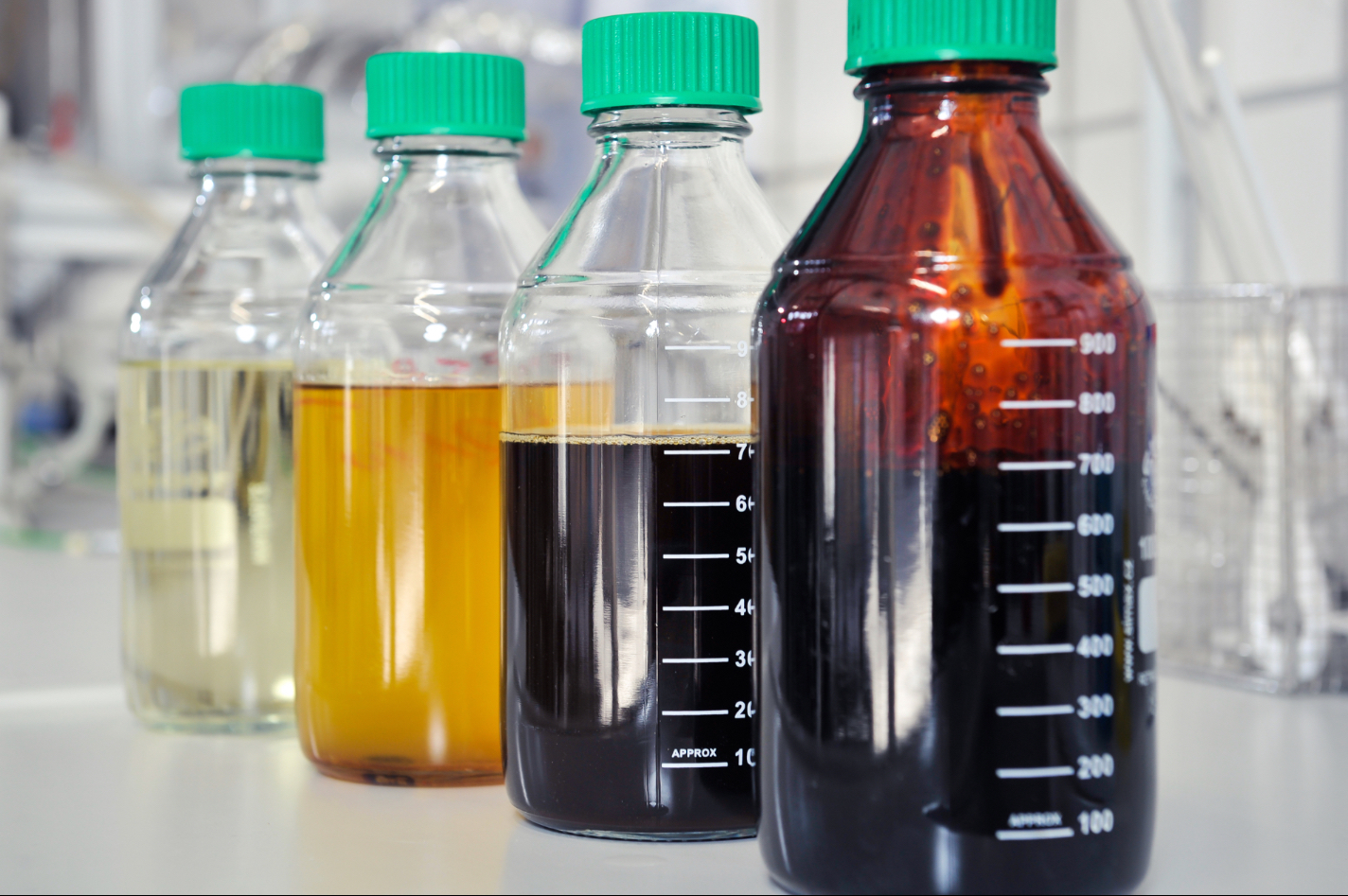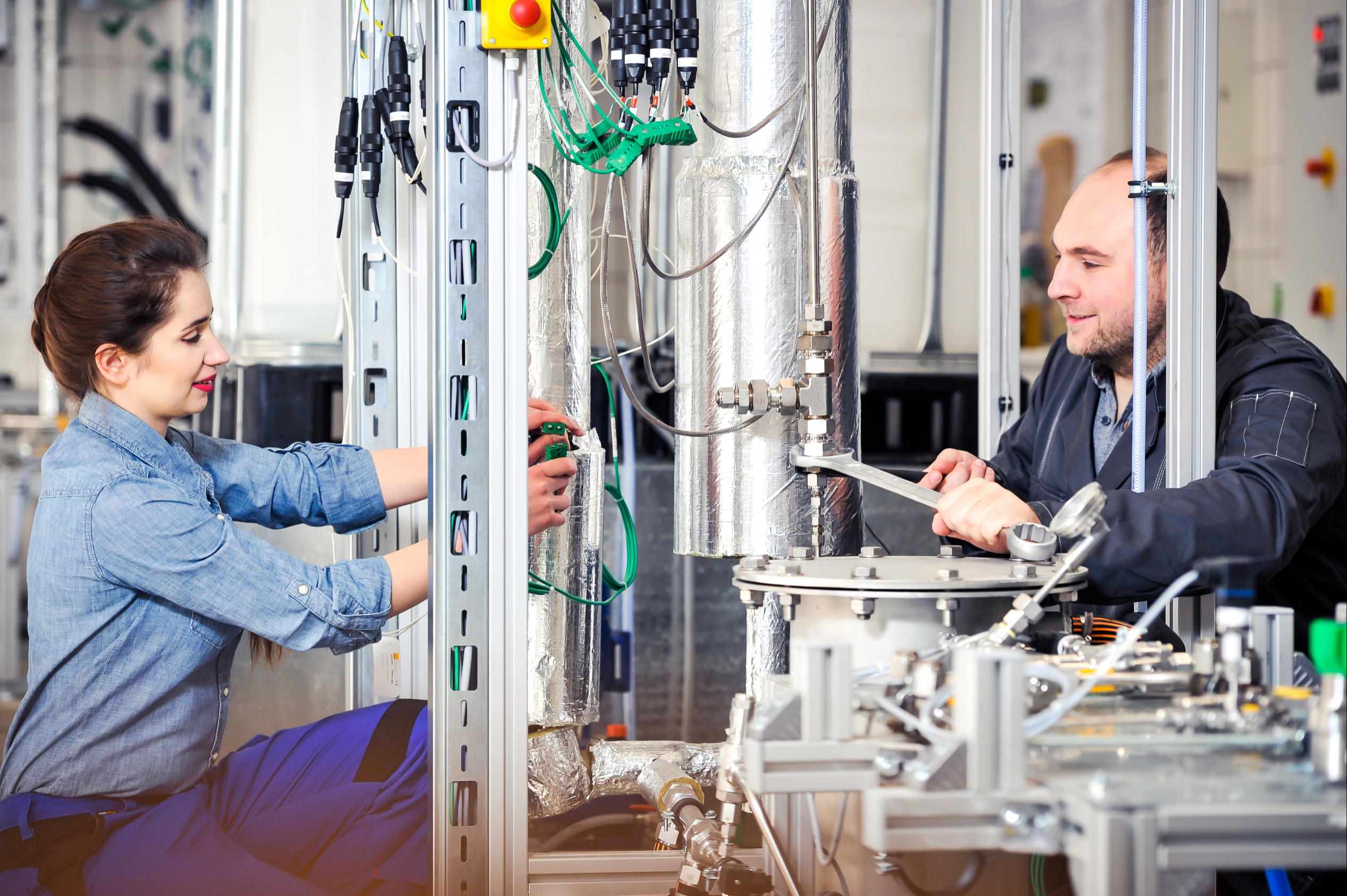Main navigation
Great potential for biological residues
Huge amounts of waste are produced both during food production and by consumers. The Conversion Technologies of Biobased Resources group at the University of Hohenheim’s Institute of Agricultural Engineering has developed a process to convert this biomass into hydroxymethylfurfural (HMF), the highly potent basic chemical that is used to produce plastics.
Every year, around 12 million tonnes of food are thrown away in Germany.1 Most of the waste (52%) is generated in private households because the food is old, ugly or spoiled. However, considerable quantities of waste are also generated before they even reach the consumer: fruit and vegetables are often sorted and discarded in the field if they do not meet the standard expectations in terms of size, shape or colour and therefore cannot be sold (12%). Leftovers from industrial food processing end up in the bin (18%), as do leftovers from restaurants and canteens (14%). As much as four percent of the waste is generated in the retail sector due to damage during transport or storage. Although energy is still obtained from the discarded material through incineration or conversion in biogas plants, it is not particularly sustainable, as significantly more resources (energy, water, nutrients) are used to produce the food.
HMF is a highly potent basic chemical for plastics
There are various ways to reduce food waste. On the one hand, the quality of the packaging can be improved so that the products are better protected and have a longer shelf life. On the other hand, ways to use the unavoidable leftovers more sensibly are needed. Markus Götz, a doctoral student under the supervision of Prof. Dr. Andrea Kruse in the Conversion Technologies of Biobased Resources group at the University of Hohenheim’s Institute of Agricultural Engineering, is playing a key role in both approaches. While studying for a master’s degree in renewable resources and bioenergy, Götz was already heavily involved in using biological material for synthesising 5-hydroxymethylfurfural (HMF). "HMF is a highly potent basic chemical that serves as starting material for plastics and many other materials," explains Götz.
Until now, producers have manufactured HMF directly from the sugar fructose, but this is expensive and is itself a food substance. "We have therefore extended the production chain up front and use a wide variety of carbohydrate sources from residual biomass. There are many sources to choose from: cellulose from wood or miscanthus (Chinese grass) to inulin from chicory or onion skins and starch from old buns or potato peels."
A process known as hydrothermal conversion is used to produce HMF. It involves heating the biological feedstock to between 160 and 200 °C in a reactor, similar to a pressure cooker, with slightly acidified water and under pressure (20 bar). The carbohydrate chains then decompose into the individual sugar building blocks. Under these conditions, fructose is then transformed into HMF with a loss of three water molecules. Glucose, however, is not a direct starting material, but must first be converted into fructose (tautomerisation). The process is stopped after a short time to prevent the formation of too many unwanted by-products, and the HMF is removed from the remaining sugar solution. The residual sugars can be used in the next round for renewed HMF synthesis.
HMF serves as the basic chemical for synthesising the plastic PEF (polyethylene furanoate), a novel high-performance polymer that can be processed into bottles, textile fibres or films in a similar way to PET (polyethylene terephthalate). Unlike PET, which is produced from fossil petroleum, PEF, which is made from renewable raw materials or biological waste products, is much more sustainable, partly because processing it requires less energy. In addition, PEF has better barrier properties against carbon dioxide, oxygen and water, which improves the shelf life of packaged food, or makes the packaging thinner and therefore lighter. This saves material and weight and thus generates fewer greenhouse gases.
EU project MyPack supports market introduction
Due to the high price of PEF, however, commercial use is still a long way off and is therefore being investigated in more detail by the research group as part of the EU project MyPack (Best markets for the exploitation of innovative sustainable food packaging solutions). MyPack supports the market introduction of innovative packaging to reduce both food and packaging waste. "We are conducting an analysis of the current situation and drafting a decision catalogue for packaging industry players," says Götz, describing the project. Synthesising large quantities of HMF is feasible, but there are still technical challenges in manufacturing PEF products. In addition, the PEF granules are yellowish in colour rather than transparent; a characteristic that deters many food suppliers.
Although PEF is biobased and therefore a bioplastic, it is not compostable. Just like PET, it needs to be disposed of in the yellow recycling bag. "We decided not to work on biodegradable plastics out of conviction," explains the scientist. "Degradable plastics are not very sustainable. They are only used for a short time, and producing them requires energy and causes emissions. In the recycling loop, the material is used longer, recycling requires less energy, and fewer new materials need to be produced."
Model refinery at the University of Hohenheim
Converting biological residues to HMF is the research group’s specialty. Since intensive research in this field has only been going on for about ten years, there is not as yet any well-founded data on the industrial application of the process. A small biorefinery has therefore been built as a demonstration facility at the University of Hohenheim’s Lindenhöfe test site in Eningen unter Achalm to prove the feasilibility of the process for farmers and the food processing industry. The facility can convert several kilogrammes of biomass an hour. The processing parameters and also the amount of HMF produced vary depending on the type and content of sugar in the feedstock. The coupling of the refinery to a biogas plant, which supplies the energy for the hot water needed to run it, is an important aspect of the production concept.
Götz and his colleagues are currently looking for funding or investors to build a large demonstration plant in order to generate accurate data on economic viability. The aim is to build a fully automated, easy-to-use biorefinery that is particularly attractive to farmers and smaller industrial companies.
Versatile use of HMF
The demand for HMF in the processing industry is a decisive factor when it comes to profitability. The chemical has great potential as a substitute for the toxic formaldehyde used to produce industrial resins or coatings. Processing into plastic packaging opens up many possible applications, mainly because of the excellent gas barriers of HMF-based plastic. As the PEF fibres have good mechanical properties, the research group is investigating applications in the textile fibre sector, for example for the automotive industry. A wide variety of applications are also conceivable in the field of sports equipment (e.g. climbing ropes or clothing). Using biological residues not only for energy generation but also for producing new materials is thus a sustainable alternative to fossil raw materials that can also benefit the local circular economy.
Literature:
1) https://www.bmel.de/DE/themen/ernaehrung/lebensmittelverschwendung/studie-lebensmittelabfaelle-deutschland.html



